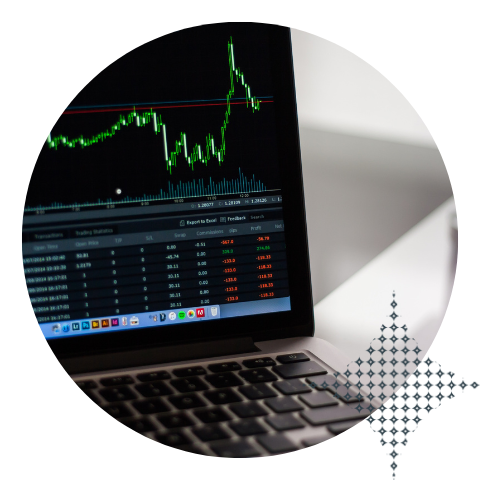Daily Market Pulse

Dollar under pressure ahead of growth figure releases
6 minute readUSD
Following yesterday's decline (0.27%), the U.S. dollar battles to maintain its resilience against its rivals early Thursday near 101.75 levels. Today's markets are likely to be driven by risk perception, as all eyes are on the U.S. data dump, especially Q4 GDP. Following a 3.2% increase in the previous quarter and two straight falls in the first half of the year, the U.S. economy is expected to expand by an annualized 2.6% in the final three months of 2022. Consumer spending on goods and services is expected to increase by 2.5% in Q4, up from 2.3% in Q3. The forecast for 2023, on the other hand, is considerably different, as the impacts of the Fed's largest rate hike campaign since the 1980s weigh on consumer demand, business investment, inventories, and the housing market, with market consensus pointing to an impending recession.
EUR
The Euro profited from the general weakening of the U.S. dollar and rose before entering a consolidation period early Thursday. It's worth noting that the European Central Bank's (ECB) quiet period begins today, and policymakers are unlikely to make any remarks on the policy outlook before next week's meeting. As a result, there may be no critical catalysts to add momentum to the common currency. According to preliminary estimates, the S&P Global Eurozone Composite PMI rose to 50.2 in January 2023, up from 49.3 the previous month and above the market consensus of 49.8. The most recent measurement indicated the first increase in business activity since last June, owing to a resurgence in service activities.
GBP
On Wednesday, Sterling snapped a two-day losing streak (gained 0.56%). The currency was last seen trading slightly higher on the day, around six-week highs, as investors awaited U.S. GDP data before placing any large bets in the markets. Meanwhile, traders are looking forward to the Bank of England's policy decision next week. The Bank of England is likely to hike interest rates by half a point to 4.0% in order to combat double-digit inflation, but markets are divided on how much further rates will rise. Britain's inflation rate fell further from its 41-year peak in October but remained significantly above the central bank's 2% objective. Elsewhere, the prospect of the UK entering a recession weighed on sentiment. The latest PMI survey revealed that UK firm economic activity plummeted at the highest rate in two years in January.
JPY
The Japanese Yen surged against the U.S. dollar early today, returning to its highest level in nearly eight months, aided primarily by broad dollar weakness amid predictions that the Federal Reserve may decrease the pace of interest rate hikes. Meanwhile, a summary of views from the Bank of Japan's January meeting revealed that policymakers discussed the inflation outlook and the likelihood of a sustained rise in wages while emphasizing the importance of maintaining the accommodating monetary policy. Last week, the BOJ rejected expectations of another policy move by maintaining ultra-low interest rates and holding its yield control policy unaltered, with BOJ Governor Haruhiko Kuroda emphasizing that the 2% inflation objective must be met in a sustainable manner. Traders will be watching the BOJ's policy meeting in March for a potential change, as well as the appointment of a new BOJ governor in April.
CAD
Yesterday, the Loonie came under pressure following the Bank of Canada's latest monetary policy announcement. In January, the Bank of Canada hiked its overnight rate to 4.50%, the highest since 2007, while signaling the end of its aggressive tightening cycle. Policymakers anticipate that growth will slow in the first half of 2023, owing to signs that tighter monetary policy is already stifling domestic demand and dampening economic activity. In the meantime, Canada's annual inflation rate fell to 6.3% in December of 2022, the least since February 2022 and below market expectations of 6.4%. Today, the Loonie has recovered some ground and is up 0.11% against the U.S. dollar.
MXN
The Mexican Peso fell against the dollar on Wednesday, pulled down by the selloff in U.S. stocks and other risk assets, but it still managed to close 0.04% higher. According to a London-based trader, hedge funds and model accounts bought the Peso on Wednesday, while corporate and real-money accounts sold it. Mexican swap rates rose further on Wednesday, reflecting a lower Peso and reacting to the likelihood of further tightening after Tuesday's inflation data exceeded expectations. Elsewhere, according to the latest figures, Mexico's economic activity fell the most in 15 months in November; experts polled in last week's Citibanamex survey anticipated GDP rising only 0.9% this year, compared to an expected 3% increase in 2022. Peso is posting losses and is down 0.25% in today’s session.
CNY
Chinese markets will be closed from January 21st to 29th for the Lunar New Year holidays and will reopen on January 30th.
BRL
The Real is trading lower today as investors await the publication of economic data from the United States, particularly the Gross Domestic Product (GDP), which could help calibrate bets on the Federal Reserve's future steps. Locally, the inflow of foreign cash into the country is still being monitored since it has aided the real in recent trading sessions. Elsewhere, the Petrobras board of directors meets this Thursday and may consider Jean-Paul Prates, the state-owned company's nominee for president, for a seat on the collegiate. That would be the final step before becoming the president.

